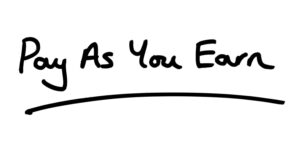Closing a company while minimising or eliminating tax liability is important for many company owners. There are a few instances in which you can close a limited company without paying tax, and many where tax is likely to be due.
- Company Dissolution Service - close your company for only £89.99
- A guide to closing a limited company
- 10 ways to reduce your Corporation Tax bill
In this post, we explore the benefits of making a company dormant to ensure no tax is owed whilst keeping the company running, and closing a company down whilst it is dormant so no tax payment is required.
We will also discuss closing a limited company when tax may be due.
What is a dormant company?
A dormant company is one that’s not carrying out any business activity or receiving any income – making it inactive for Corporation Tax purposes as far as HMRC is concerned.
As such, a dormant company will not be required to pay any Corporation Tax while it is dormant. Furthermore, as long as no money is taken out of the company and no shares are disposed of during its dormancy, there will be no dividend, income, or capital gains taxes to pay.
The definitions of a dormant company are slightly different for HMRC and Companies House. The HMRC definition of a dormant company is one which:
- has stopped trading and has no other income, such as investments; or
- is a new limited company that hasn’t started trading yet – tax returns don’t have to be filed until the company starts trading; or
- is an unincorporated club or association run for the benefit of its members, and owes less than £100 in Corporation Tax.
The Companies House definition of dormancy is a company that has had ‘no significant accounting transactions during the accounting period’. So it can’t have:
- generated income
- earned bank interest.
For the purposes of taxation, the HMRC definition is the most important.
Does a dormant company need to pay tax?
Dormant companies do not need to pay any tax while they are considered dormant by HMRC.
HMRC views a limited company as dormant up until the day it starts trading. There is no need to file tax returns during this period.
Once trading starts, HMRC needs to be informed within three months.
If a company subsequently stops trading, it’s classified as ‘non-trading’ by HMRC but ‘dormant for Corporation Tax’. HMRC will allow a company to remain in this state for up to five years.
How can I let HMRC know my company has become dormant?
HMRC should be informed that a company has become dormant within three months.
This can be done by phone or post with the 10-digit Unique Tax Reference (more information on contacting HMRC can be found here).
Alternatively, once a new company is formed, HMRC will send a CT41G form to the company’s registered office address. The CT41G Dormant Company insert in this form should be completed and sent to HMRC, which will inform HMRC that the company is dormant.
What are the tax implications of shutting down a company entirely?
As discussed above, a dormant company will remain on the official register of companies, unless it is shut down entirely and struck off.
If a business is insolvent (can’t afford to pay its debts), a business can explore one of three options.
- Put their company into administration: This involves granting a Licenced Insolvency Practitioner full control of the business, in which time they will seek to restructure the business in such a way as to make it profitable enough for creditors to be repaid. If they can’t do this, they will be granted full authority to either sell the company off as a going concern or completely liquidate it in order to pay off creditors. The benefit of this approach for directors and shareholders is that, unless they’ve made personal guarantees or acted unlawfully in anyway, they will not be personally responsible for their company’s debts even if the company’s assets don’t cover the debts accrued.
- Arrange a Creditors’ Voluntary Liquidation: This involves getting a Licenced Insolvency Practitioner to oversee the liquidation of the company. 75% of shareholders (in terms of share value) have to agree to this option before the process can begin. This is a valid option if there’s no feasible way to make the business profitable again and the vast majority of shareholders are on the same page about this fact.
- Request a Compulsory Liquidation: This occurs when a company is at least £750 in debt and there’s no feasible way for them to pay it off. A more expensive and complicated option because it involves the courts and, as a result, legal fees, unlike the other two insolvency options, this process can be kicked off by the creditors themselves if they put together a winding-up petition and can prove the company owes them over £750 that it can’t pay back. However, if this type of liquidation is initiated by the company, like with a Voluntary Liquidation, 75% of shareholders (in terms of share value) have to agree to this motion.
However, assuming a business is solvent* (and can pay off its debts), there are two ways in which a company can be struck off the register: Voluntary Strike Off or Members Voluntary Liquidation (MVL).
We will consider these below, along with the tax efficiencies of each.
* If a company is insolvent, it will be necessary to follow the Company Voluntary Arrangement or the Creditors’ Voluntary Liquidation (CVL), failing which creditors can force a Compulsory Liquidation.
Closing a limited company by Voluntary Strike Off
Voluntary strike-off (also known as ‘informal liquidation’ or ‘winding up’) is essentially a process of asking Companies House to strike a limited company from the register of companies.
There are certain conditions that a company must meet before it can apply for voluntary strike off:
- During the previous three months, the company should not have traded or otherwise carried on business;
- During the previous three months, the company should not have changed its registered name; and
- There should be no threats of liquidation against the company or any creditors’ agreements in place (e.g. CVAs).
If it meets these conditions, prior to requesting for it to be struck from the register, there are certain preliminary steps that must be taken:
- Make staff redundant, ensuring that all the proper rules are followed and that outstanding salaries and holiday pay is dealt with correctly. Any payroll scheme will need to be closed and HMRC should be informed that the company is no longer employing people.
- Distribute business assets amongst shareholders (any assets remaining following strike off automatically revert to the Crown).
- File relevant statutory accounts and a final company tax return with HMRC, stating that these are the final trading accounts and that the company will be dissolved shortly.
- All outstanding tax liabilities (e.g. Corporation Tax) need to be paid in full.
- Any business bank accounts should be shut down and website domain names transferred.
The strike off process
Once these preliminary steps have been taken, an application can then be made to Companies House to strike the company from the official register.
The directors must formally agree to shut down the company, either by passing a resolution at a board meeting or through a written board resolution. Once the decision has been officially made, it is then time to fill out Form DS01. This should be signed by the majority of the company directors and then sent to Companies House.
A copy of the application to strike off should be sent within 7 days to anyone who could be affected, including creditors; employees; shareholders/members; trustees or managers of employee pension funds; and any directors who did not sign the application form.
If the application for voluntary strike off is accepted, a notice will be put in the local Gazette, which provides an opportunity for any interested parties to object. In the absence of any objections, a second notice is published two to three months later, announcing that the company has been officially dissolved.
A copy of all relevant business documentation (including bank statements, invoices, and receipts) should be retained for seven years following the voluntary strike off. If the company had any employees, copies of the employers’ liability insurance policy and schedule must be retained for 40 years after the date of dissolution.
Close your company with 1st Formations
1st Formations provides a Company Dissolution Service which includes the following:
- Companies House fee
- Completion and filing of the DS01 form (the application to strike off a company)
- Board Resolution to approve the dissolution
- Continued use of our Registered Office and Service Address until your company is closed down.
All you need to do is purchase the product and electronically sign the application to dissolve. The rest will be done for you by 1st Formations company secretarial staff.
Tax implications of Voluntary Strike Off
Profits up to £25,000
If a company’s retained profits are £25,000 or less, all shareholders will pay the applicable rate of Capital Gains Tax (CGT).
There is an annual CGT allowance – the amount of gains that can be made without being subject to any tax. This currently stands at £3,000 in the tax year 2025-26.
Any gains that exceed the CGT allowance will be subject to the applicable level of taxation based on your Income Tax band. For the tax year 2025-26, these rates are as follows:
Basic rate tax band
- 18% on gains from residential property
- 18% on gains from other chargeable assets
- 32% on your gains from ‘carried interest’ (if you manage an investment fund)
Higher and additional rate tax bands
- 24% on your gains from residential property
- 24% on your gains from other chargeable assets
- 32% on your gains from carried interest
Business Asset Disposal Relief (formerly known as Entrepreneurs’ Relief) may be available to eligible directors, providing a reduced rate of 14% CGT on disposals instead of the normal rates. This relief is normally available if a director holds at least 5% of the shares and voting rights.
If your company has never traded or had any significant financial transactions, you can close the company off via a voluntary strike-off and no tax will be owed.
Alternatively, if your company has traded but is up to date with its tax payments and has been dormant for a period of time, you will be able to voluntarily strike off your company without any tax being owed.
Profits over £25,000
If the company’s retained profits are in excess of £25,000, all shareholders will be required to pay personal tax on the profits at their relevant personal rates.
These will normally be distributed as a final dividend. Directors who receive dividend payments on shareholdings are liable to pay tax on any payment above the dividend allowance (£500 in 2025-26).
The rate of tax payable will depend on the individual’s Income Tax bracket. However, the tax rate applied to dividend payments is lower than the equivalents for salary payments, with the current rates as follows:
- Up to £50,270 (Basic rate) – 8.75%
- £50,271 to £125,140 (Higher rate) – 33.75%
- Over £125,140 (Additional rate) – 39.35%
If some of the retained profits are paid in the form of a salary instead of dividends, the Income Tax rates stand at:
- Up to £50,270 (Basic rate) – 20%
- £50,271 to £125,140 (Higher rate) – 40%
- Over £125,140 (Additional rate) – 45%
You’ll pay different rates of Income Tax if you live in Scotland.
In the tax year from 6 April 2025 to 5 April 2026, the Personal Allowance (i.e. the amount of income that can be earned tax-free) is £12,570. This is the same for taxpayers in all parts of the UK. However, it reduces by £1 for every £2 of adjusted net income above £100,000, meaning your allowance will be zero if your annual income is £125,140 or more.
Closing a limited company by Members’ Voluntary Liquidation (MVL)
Members’ Voluntary Liquidation (MVL) is an alternative procedure to close down a solvent company. This is generally viewed as being more tax efficient as compared to Voluntary Strike Off.
Since a liquidator needs to be appointed to carry out an MVL, the process itself is more expensive. But if the amount of retained profits to be distributed amongst shareholders exceeds £25,000, MVL will generally offer a more tax-efficient approach.
MVL process
A Declaration of Solvency needs to be signed by a majority of the company directors. This statutory declaration essentially states that the company will be able to repay its debts, along with any interest, within a fixed period of time not exceeding 12 months.
Following this declaration being made, an Extraordinary General Meeting has to be called (no more than five weeks after the declaration). A Special Resolution should then be passed which confirms the liquidation and the appointment of a liquidator.
Within 14 days of their appointment, the liquidator must provide notice of their appointment to Companies House and advertise their appointment in The Gazette.
The MVL process then falls to the liquidator, who takes control of the company and carries out their various duties, such as gathering and distributing assets accordingly.
Tax implications of Members’ Voluntary Liquidation
The main tax advantage of closing a limited company using MVL as opposed to Voluntary Strike Off is that the distributions of retained profits amongst shareholders are subject to CGT (as opposed to dividend tax or Income Tax).
Unlike Voluntary Strike Off, there is no differentiation of profits above or below £25,000. All profits will be subject to CGT.
Business Asset Disposal Relief is also available under MVLs, so this can provide an added tax saving.
Targeted anti-avoidance rule
It is important to note that MVL cannot be used by directors who intend to set up another company after closing their current limited company and extracting profits.
This practice was a relatively common practice up until 2016, known as ‘phoenixism’ due to the analogy of a new company rising from the ashes. However, the Finance Act 2016 introduced a new Targeted Anti-Avoidance Rule (TAAR), which aimed to clamp down on phoenixism.
TAAR essentially treats any capital distributions which have been made via MVL as dividend distributions, and seeks to claw back any tax avoided when the following conditions are met:
“Condition A: The individual receiving the distribution had at least a 5% interest in the company immediately before the winding up
Condition B: the company was a close company at any point in the two years ending with the start of the winding up
Condition C: the individual receiving the distribution continues to carry on, or be involved with, the same trade or trade similar to that of the wound up company at any time within two years from the date of the distribution
Condition D: it is reasonable to assume that the main purpose or one of the main purposes of the winding up is the avoidance or reduction of a charge to Income Tax.”
As such, although MVL is generally a more tax-efficient option for shareholder directors looking to close a limited company and extract profits, it is not a viable option for anyone seeking to merely avoid tax and continue in the same line of work.
Voluntary Strike Off vs MVL: what is more tax efficient?
If retained profits are no more than £25,000, it will generally be better to opt for Voluntary Strike Off, as money can be saved on a liquidator.
If retained profits exceed £25,000, MVL will normally be a more tax-efficient option, but the cost of the liquidator should be taken into account.
If a shareholder director intends to set up a similar business within two years, it will be better for them to opt for Voluntary Strike Off, as the TAAR negates any tax savings.
Please note that the information provided in this article is for general informational purposes only and does not constitute legal, tax, or professional advice. While our aim is that the content is accurate and up to date, it should not be relied upon as a substitute for tailored advice from qualified professionals. We strongly recommend that you seek independent legal and tax advice specific to your circumstances before acting on any information contained in this article. We accept no responsibility or liability for any loss or damage that may result from your reliance on the information provided in this article. Use of the information contained in this article is entirely at your own risk.








Join The Discussion